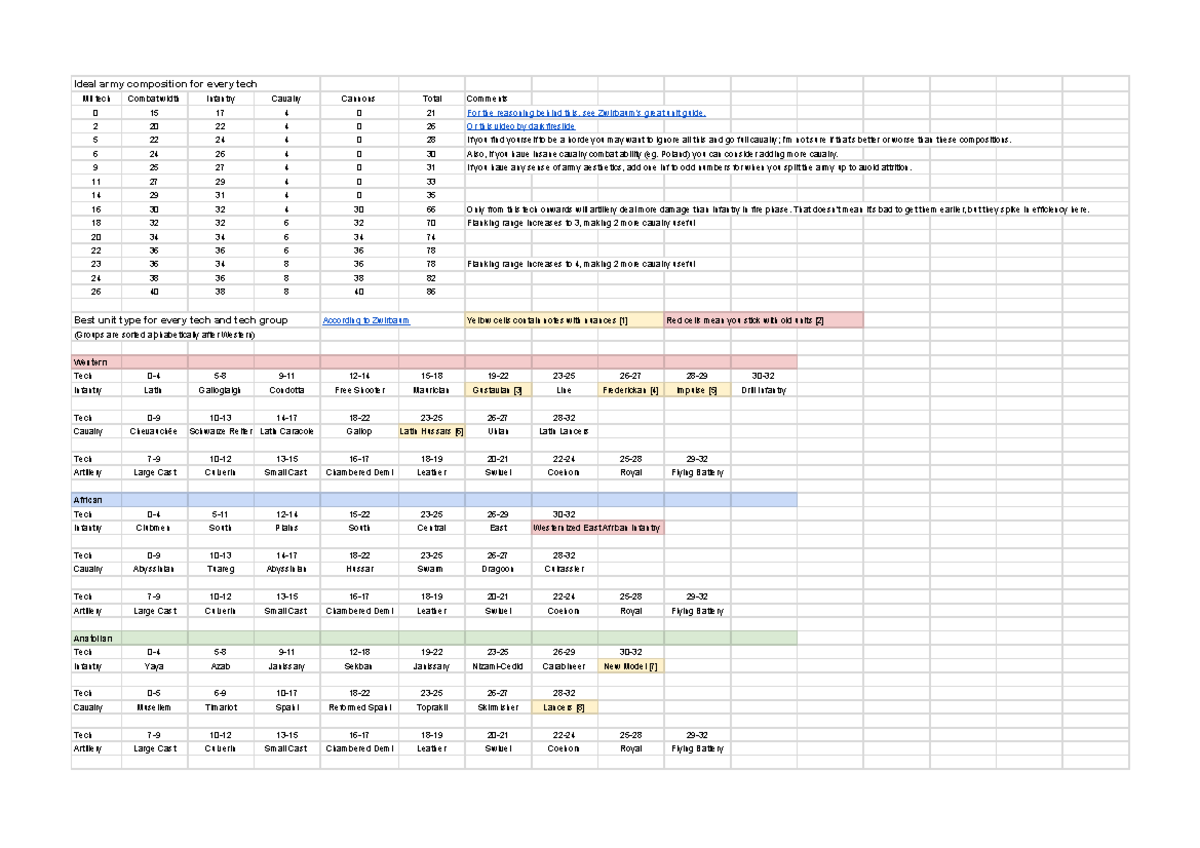The main benefit is the flanking range, but 4 to 6 cavalry is not enough to guarantee you have full flanking width all the time.
This is because as enemy units retreat, their width decreases but your cavalry stays on the outside of your width.
So even early game it may be beneficial to use more cav, especially when army sizes are small (in HRE for example), because an extra 2 units attacking enemies is more impactful when the total width used by enemies is only 10.
I really don't get the talk about cavalry being able to flank when
a) inf can flank too, and so can artillery
b) flanking only happens below combat width
c) flanking can genuinely hurt you sometimes, which most people won't notice (ie. by making you stay in lost battles for longer, due to having edge regiments beat out the opponent's regiments and stay in battle, while majority of your troops retreat
But even on tech level 7 these add about 33% of an infantry unit worth of damage. I am ignoring any siege benefits for now.
This is a bizarre take. I assume you arrived here by just dividing artillery's tech modifier (0.5) by infantry's tech modifiers sum (1.5)
but this ignores
a) that as the battle goes on, infantry's strength will decrease, and artillery's wont; overall an average strength of an infantry regiment tends to sit somewhere between 70-80%
b) that artillery adding extra damage output results in your opponent's regiments losing their strength faster.. thus making your infantry take less damage
you just can't make comparisons like this
Not to mention other stuff like:
a) artillery will last you 2.5 infantry regiments in a battle before retreating
b) while losing 0 manpower.
But 5% discipline increases combat strength by 10,25%.
Is it you going.. 105/(1/1.05)? But this completely ignores how combat formulas are affected by other modifiers; don't look at modifiers in vacuum
Not to mention that combat modifiers will scale exponentially. I could maybe get a "increases combat strength by roughly 21%" but even that's a simplified way to look at it
At tech level 7, about 8 artillery adds the same combat buff to a full-width infantry army as 5% discipline.
This completely ignores that artillery will result in the middle regiments of your opponents retreating faster, whereas 5% discipline will apply uniformly, which has its own quirks
In general, you are making a lot of weird claims that I don't think are particularly supported by anything valid.


